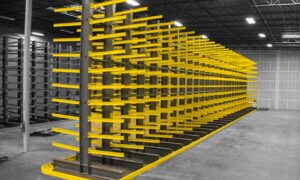Microsoft Excel, a seemingly simple spreadsheet program, has been a stalwart in business operations for decades. Most people are familiar with its basic uses like data storage, simple calculations, and chart creation. However, many are unaware that its uses go far beyond these functions. In this article, we will explore eight innovative and unexpected ways that Excel can be utilized.
1. Creating an Interactive Calendar
Excel can be transformed into an interactive calendar, aiding in your personal or professional planning. With a bit of formatting and conditional formatting rules, you can create a calendar that changes appearance based on the data entered.
2. Designing Forms
You can use Excel to design simple, yet effective forms. With its cell merging and border options, you can design structured forms for data entry that can help streamline the collection and storage of information.
3. Digital Art
This one might surprise you, but Excel is a surprisingly capable tool for creating digital art! Through the manipulation of cell sizes and colors, you can make unique pixel art, or even more complex images and graphics.
4. Solving Complex Equations
Excel’s math functions aren’t just for basic arithmetic. With advanced functions and formulas, Excel can be used to solve complex algebraic and differential equations.
5. Creating a Personal Budget
Excel’s formula capability makes it a perfect tool to keep track of personal finances and budgets. Its cells can be used to list expenses, with formulas used to calculate totals, savings, and more.
6. Inventory Management
You can build your own simple inventory management system using Excel. With its ability to analyze data, you can track sales, detect trends, and keep tabs on inventory levels.
7. Coding with Visual Basic for Applications (VBA)
Excel also opens up a world of coding possibilities with Visual Basic for Applications (VBA). With a little learning, you can automate Excel tasks, build complex models, and even develop simple games.
8. Production Scheduling
One of the most powerful uses of Excel is in production scheduling. With the right software, such as the Scheduler123, an Excel-based production scheduling system, you can manage and optimize your production line. This tool is an excellent solution for master schedulers, offering a balance between flexibility and automation.
Now, if you’re excited about these unique uses of Excel and thinking of incorporating some smart technologies into your home, you might be interested in exploring the 10 revolutionary smart home features that you need to watch out for.
Excel is more than a simple data storage tool. It’s a powerful software that, with a bit of creativity, can be used for an incredible array of tasks. Don’t be afraid to think outside the box and explore these unusual uses for Excel. It might just transform the way you work or play.
The Excel Learning Curve
Many people may feel daunted by Excel, given its myriad features and functions. However, Excel, like many skills, is best approached one step at a time. Start with the basics – learn to input data, perform simple calculations, and utilize basic functions like ‘SUM’ and ‘AVERAGE’. Once you’re comfortable with these, move on to more complex tasks. The learning curve is steep, but the reward is a skill set that is highly valuable in numerous professional contexts.
Excel’s Integration with Other Microsoft Products
One of the advantages of Excel is how seamlessly it integrates with other Microsoft products. Need to include a chart in a PowerPoint presentation? Excel has got you covered. Need to import data from Word or Access? Excel can handle it. This synergy across Microsoft products is a great productivity booster, enabling users to create and manage comprehensive projects across multiple platforms with relative ease.
The Hidden Powers of Excel
Hidden beneath the surface of Excel are a myriad of functions that many casual users never discover. These range from relatively simple tools like PivotTables, which can quickly summarize and analyze large data sets, to the power of macros, which can automate repetitive tasks and transform the way you use Excel. With the willingness to learn and experiment, you can tap into these hidden powers and leverage Excel to its full potential.



































